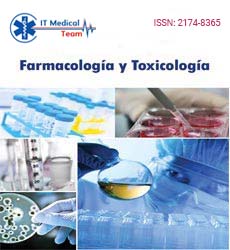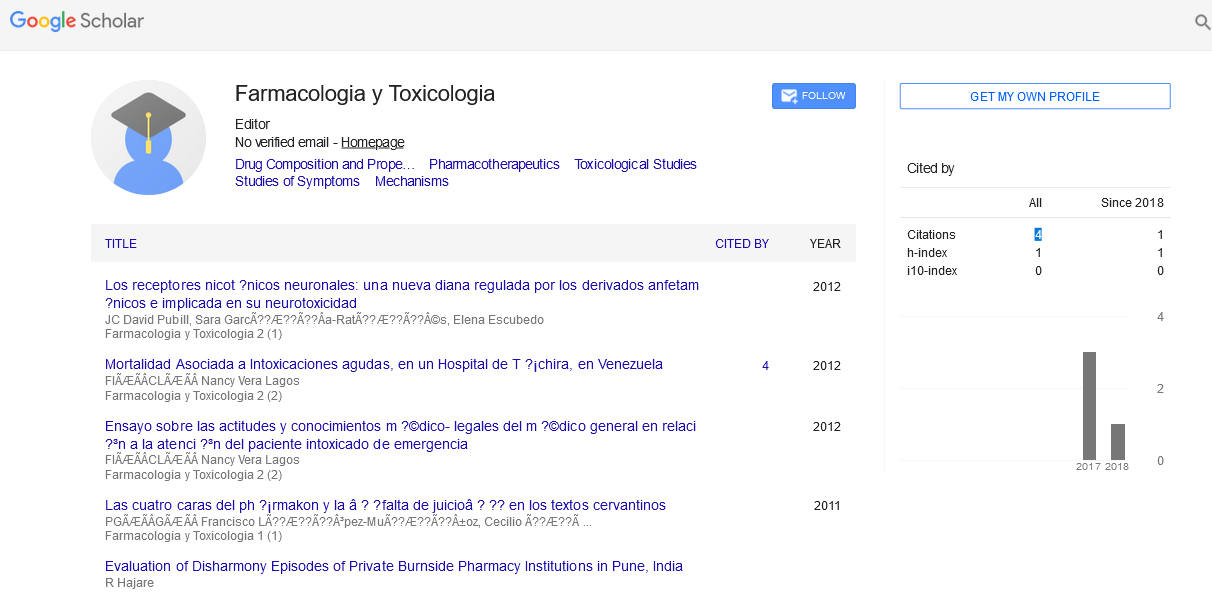Perspective - (2023) Volume 13, Issue 5
Drug properties involved in pharmacology and toxicology
Yuanhui Ji*
Department of Pharmacology and Toxicology, University of Drecht, Alkmaar, Netherlands
*Correspondence:
Yuanhui Ji, Department of Pharmacology and Toxicology, University of Drecht, Alkmaar,
Netherlands,
Email:
Received: 04-Sep-2023, Manuscript No. ipft-23-14221;
Editor assigned: 07-Sep-2023, Pre QC No. P-14221;
Reviewed: 21-Sep-2023, QC No. Q-14221;
Revised: 03-Oct-2023, Manuscript No. R-14221;
Published:
19-Oct-2023, DOI: -
Introduction
Pharmacology and toxicology are two closely related
fields that deal with the effects of chemical substances on
living organisms, particularly on humans. Understanding
the properties of drugs, both their beneficial
pharmacological effects and potential toxicological
consequences, is crucial for the development and safe use of
medications. In this comprehensive discussion, we will
explore the key drug properties involved in pharmacology
and toxicology, shedding light on their implications for
drug development, clinical practice and public health.
Description
Pharmacokinetics
Pharmacokinetics refers to the study of drug Absorption,
Distribution, Metabolism and Excretion (ADME) within
an organism. These processes collectively determine the
concentration and duration of drug exposure in the body,
which, in turn, significantly influence the drug's
therapeutic effects and potential toxicity.
Absorption: Drug absorption is the process by which a
drug enters the bloodstream from its site of administration.
The route of administration, such as oral, intravenous,
intramuscular or topical, greatly affects the rate and extent
of absorption. For example, oral drugs undergo extensive
metabolism in the liver (first-pass effect) before reaching
systemic circulation, while intravenous administration
delivers drugs directly into the bloodstream, bypassing this
initial metabolism.
Additionally, the physicochemical properties of a
drug, such as solubility, lipophilicity and molecular size,
can impact its absorption. Lipophilic drugs can readily
penetrate cell membranes, whereas hydrophilic drugs may
require specialized transport mechanisms.
Distribution: Once in the bloodstream, drugs are
distributed throughout the body to reach their target
sites. The distribution of drugs is influenced by
factors like blood flow, tissue permeability, protein
binding and lipid solubility. Highly protein-bound drugs
may have a limited therapeutic effect, as only the free,
unbound fraction is pharmacologically active.
The concept of Volume of distribution (Vd) helps
estimate the extent of drug distribution. A low Vd indicates restricted distribution to the plasma, while a high Vd
suggests distribution into tissues.
Metabolism: Drug metabolism involves the
biotransformation of a drug into metabolites, which are
often more water-soluble and easier for the body to
eliminate. The primary site of drug metabolism is the liver,
where cytochrome P450 enzymes play a crucial role in
breaking down drugs. However, other organs and tissues
also contribute to drug metabolism.
Metabolism can activate, inactivate or convert drugs into
toxic intermediates. The extent and rate of metabolism
can vary among individuals due to genetic factors, drugdrug
interactions and other factors. Understanding drug
metabolism is essential for tailoring drug regimens and
predicting potential drug interactions.
Excretion: Drug excretion is the removal of drugs and
their metabolites from the body. The kidney is the
primary organ responsible for excretion, primarily
through urine. Biliary excretion, feces, sweat and
exhalation via the lungs are alternative routes.
The rate of excretion is influenced by renal function,
Glomerular Filtration Rate (GFR) and tubular secretion.
In cases of impaired renal function, the accumulation of
drugs and their metabolites can lead to toxicity.
Therefore, dosage adjustments are often necessary for
patients with renal dysfunction.
Pharmacodynamics
Pharmacodynamics deals with the study of the
physiological and biochemical effects of drugs on the
body. Understanding how drugs interact with their target
receptors and how these interactions translate into
therapeutic and adverse effects is crucial for the safe and
effective use of medications.
Receptor binding: Many drugs exert their effects by
binding to specific receptors in the body. Receptors can be
found on the cell surface, in the cytoplasm or within the
cell nucleus. Drug-receptor binding triggers a cascade of
events that ultimately produce a pharmacological response.
The affinity and selectivity of a drug for its target receptor
play a significant role in determining its pharmacological
profile. High selectivity can minimize off-target effects,
while high affinity can enhance the drug's potency.
Mechanism of action: The mechanism of action
elucidates the precise biochemical and physiological pathways through which a drug exerts its effects.
Some drugs act as agonists, activating receptors and
enhancing physiological responses, while others act as
antagonists, blocking receptor activation.
Understanding a drug's mechanism of action allows for
the development of more targeted therapies and can
guide the design of drugs with fewer side effects.
Toxicology
Toxicology is the study of the adverse effects of
chemicals, including drugs, on living organisms. Druginduced
toxicity can manifest in various ways and
understanding the mechanisms and risk factors for toxicity
is crucial for minimizing harm.
Drug toxicity can be categorized into several types,
including:
Acute toxicity: Occurs shortly after a single exposure to
a high dose of a drug and can lead to severe, immediate
adverse effects.
Subacute and subchronic toxicity: These types of
toxicity develop over weeks to months of repeated drug
exposure.
Chronic toxicity: Results from long-term exposure to a
drug and can lead to cumulative and irreversible damage.
Organ toxicity: Some drugs may exhibit organspecific
toxicity, such as hepatotoxicity (liver damage) or
nephrotoxicity (kidney damage).
Idiosyncratic reactions: Unpredictable, rare adverse
reactions that occur in a small subset of the population due
to individual genetic factors.
Conclusion
In summary, the properties of drugs involved in
pharmacology and toxicology are complex and
multifaceted. Understanding the pharmacokinetic and
pharmacodynamic aspects of drugs is critical for designing
effective and safe medications. Additionally, recognizing
the potential for drug toxicity and employing rigorous
testing and surveillance measures are essential for
protecting public health. The development, formulation,
administration and regulatory oversight of drugs all
contribute to the intricate interplay of factors that govern
the benefits and risks of pharmaceuticals in modern
medicine. By continually advancing our knowledge of
drug properties and their impact on health, we can
improve drug development, patient care and overall wellbeing.





